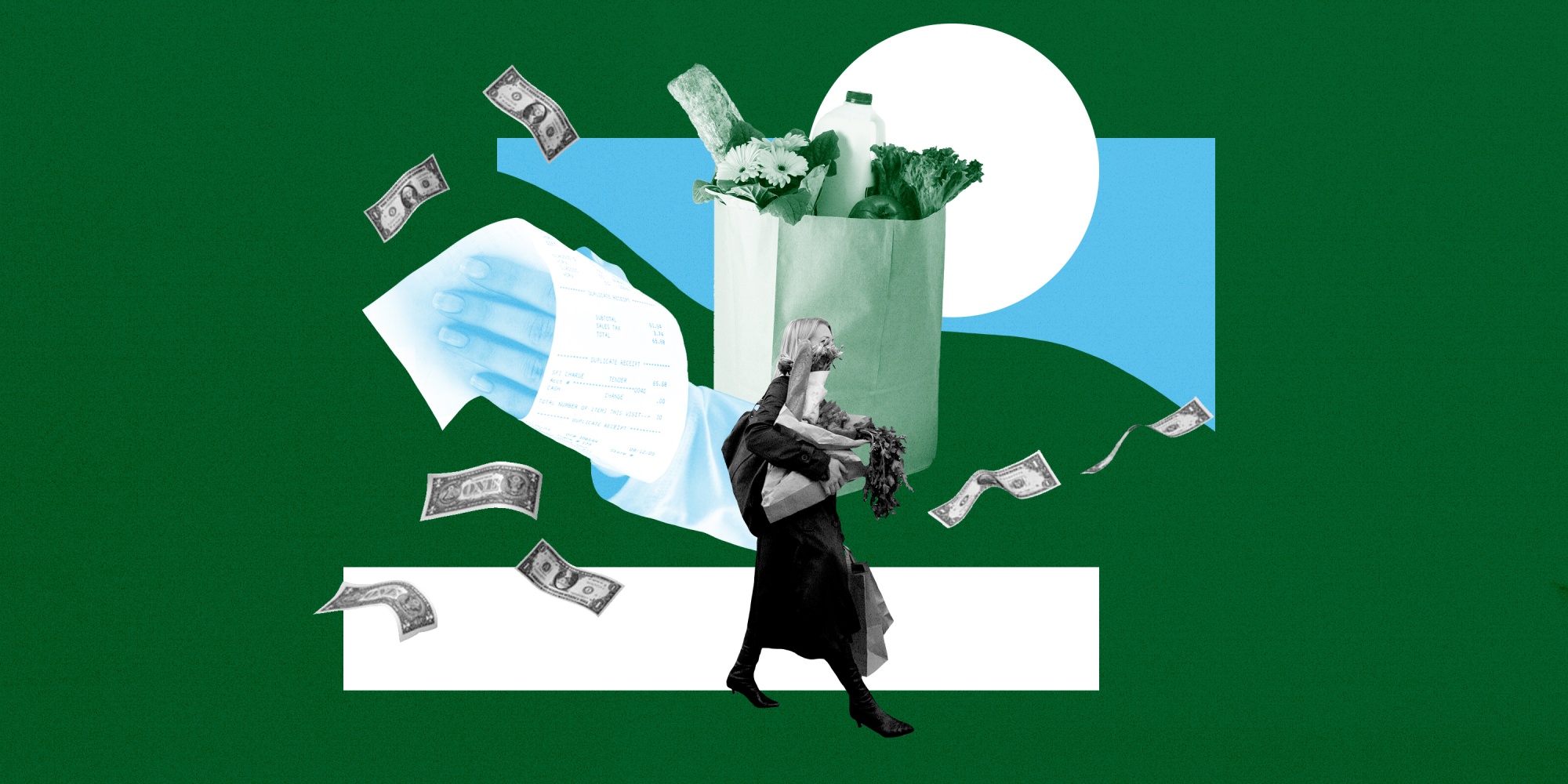6 Money-Saving Hacks for Eating Healthy on a Budget

It’s tough enough to eat healthy, but eating healthy on a budget is near impossible, right?
No. The truth is that being a healthy eater doesn’t mean you have to empty your wallet every time you go to the grocery store. I’m a die-hard healthy shopper, but I promise you, when I buy healthy food I don’t break the bank. Follow my tried-and-true healthy shopping tips and you’ll even have enough money left over to buy that new piece of athleisure wear.
How to shop — and eat — healthy on a budget:
-
Go for organic (most of the time)
-
Prep like an Olympian
-
Plan ahead
-
Think beyond beef
-
Buy in bulk
-
Choose water
1. Go for organic (most of the time)
It’s nice to buy all organic, but if you’re watching your paycheck, pick your poison. The most simple way to do this is to check the Environmental Working Group's Dirty Dozen and Clean 15. These lists break down which foods are the most important to buy organic (most laden with pesticides) and which are likely to be “cleaner” even if not organic.
Another way to eat organic is to shop at farmer’s markets and get chatty with your farmers. Many farms are actually organic even if they don’t (or can’t) claim it. This is because it's expensive to be certified organic. Talk with those farmer friends and you may come to learn the berries that are less expensive than at the grocery store are actually from “cleaner” farms.
While you’re shopping, buy them in bulk and freeze them yourself. Another bonus, your local farmer's market is a great way to be involved in your community and you’ll probably find that you look forward to going. It’s part of my Saturday morning routine.
2. Prepare like an Olympian
Instead of spending $12 a day on that fall kale salad, prepare your own. I do this almost daily! I wash kale or other salad greens on Sunday and leave in bags in the fridge. When ready to prep lunch, I add dinner leftovers (roasted veggies and sometimes leftover protein such as salmon) and then add a nut, seed or a little cheese that I have around.
Sometimes, I’ll add chickpeas or even the last quarter of that sweet potato from the previous meal. You can also incorporate dinner leftovers into breakfast the next day. An egg scramble with sauteed mushrooms and roasted broccoli rabe is delish (and takes three minutes to prep), and you’ll think you’re at a new fave restaurant.
3. Plan, plan, plan ahead
I know you think you can’t add one more thing to your to-do list each week, but I promise you, P-R-O-M-I-S-E, that putting in even five minutes of meal planning will help you eat healthier and save you money. Create your menu for the week and make a list before going to the grocery store. You’ll buy what you need (instead of grabbing what looks yum at the moment) and you’ll have already planned to save that extra half sweet potato from dinner for sweet potato toast at breakfast the next day.
You don’t have to have some elaborate meal planning system and you certainly do not need to be a chef. You just need a paper and pen (or your smart phone!) and a few minutes. Give it a go this week.
One more tip: When you’re at the grocery store, go generic for many packaged items — not necessarily for all items. You have to read all packaged products ingredient lists very carefully. But you’ll find many store brands are the exact same as the brand name you’ve been buying for years.
4. Think beyond beef
Remember that it's not all about the beef. If you’re a meat eater, you may spend a big chunk of change on meat. Up the quality of the meat you buy — for example, buy grass-fed beef — but reduce the amount you’re buying. Alternatively, you can replace it with lower-cost items like canned salmon (you can buy wild) or tuna and add a few more plant-based, less expensive protein options such as beans, lentils and eggs.
5. Buy in bulk
Instead of purchasing small individual containers of yogurt, buy a larger bin and add your own toppings (personally, I love adding organic frozen berries) and chopped nuts. Splurge one time on cute individual glass containers and use them to pre-portion yogurt, hummus and peanut butter.
6. Choose water
Juice, soda and the drink du jour take up a big portion of many people’s grocery bills. Do your wallet — and health — a favor and drink water. Check out the quality of your tap water. Add a few slices of lemon, mint or cucumber and you have a perfect free beverage.
The post 6 money-saving hacks for eating healthy on a budget appeared first on TODAY.

